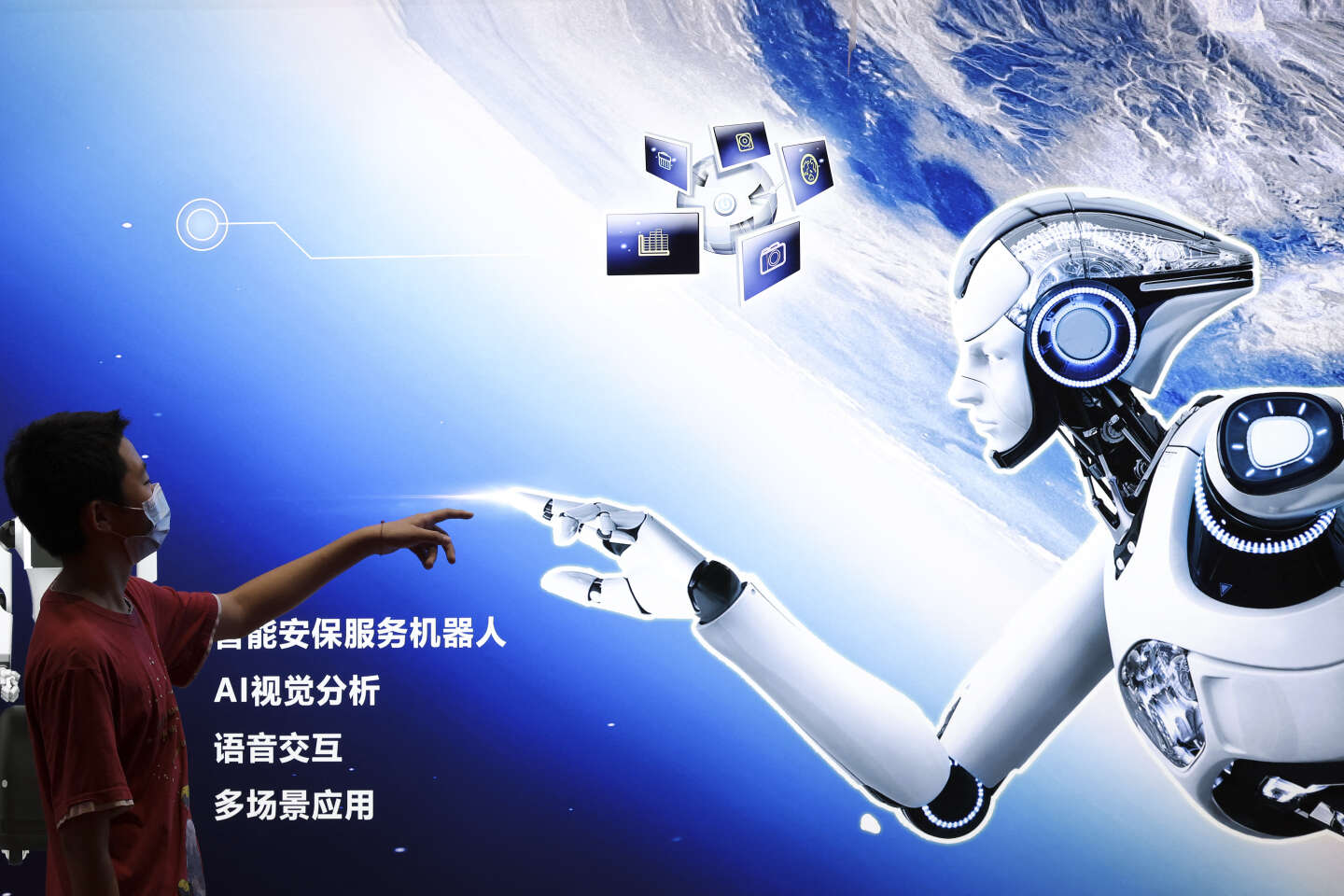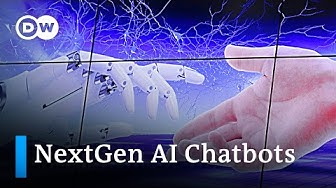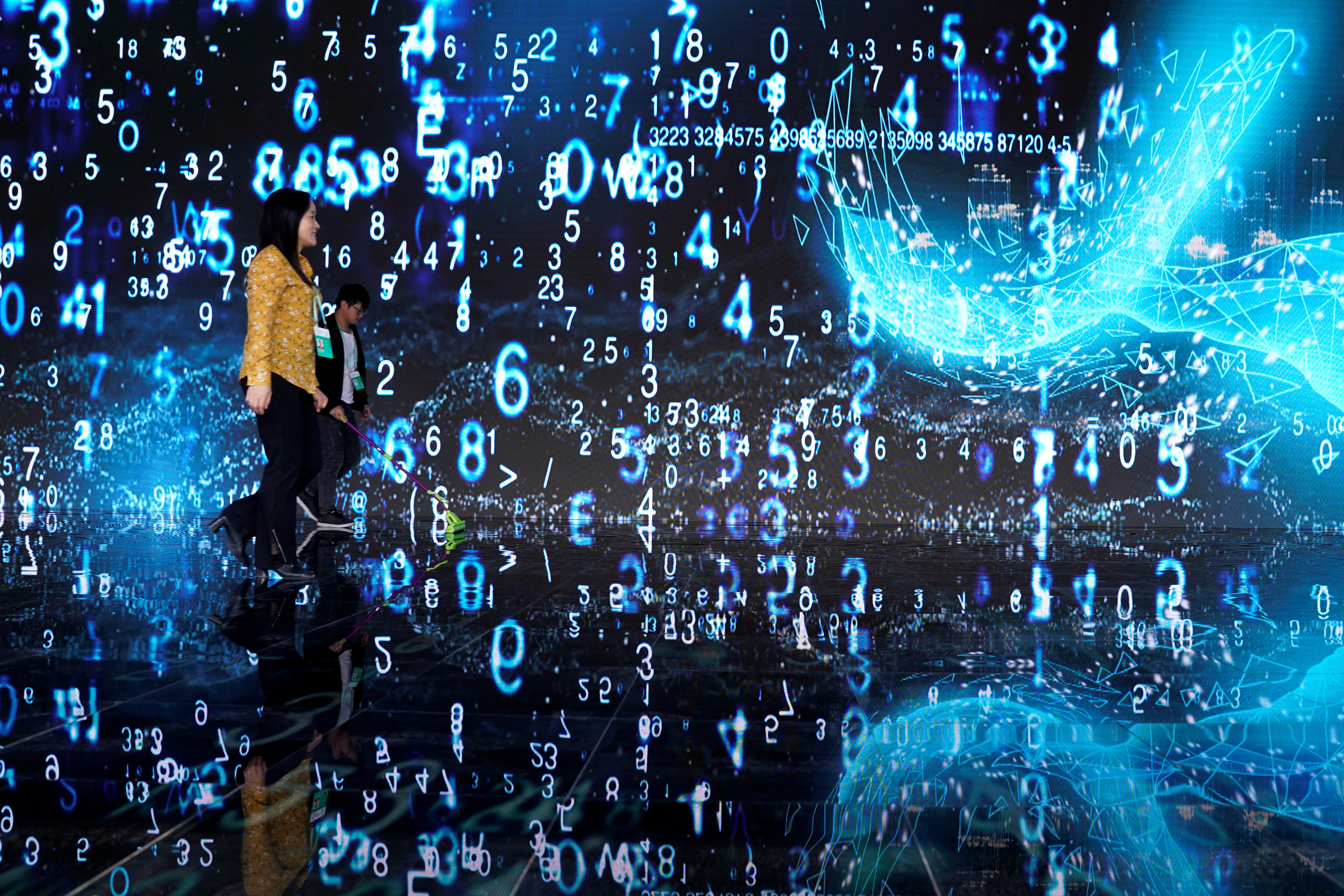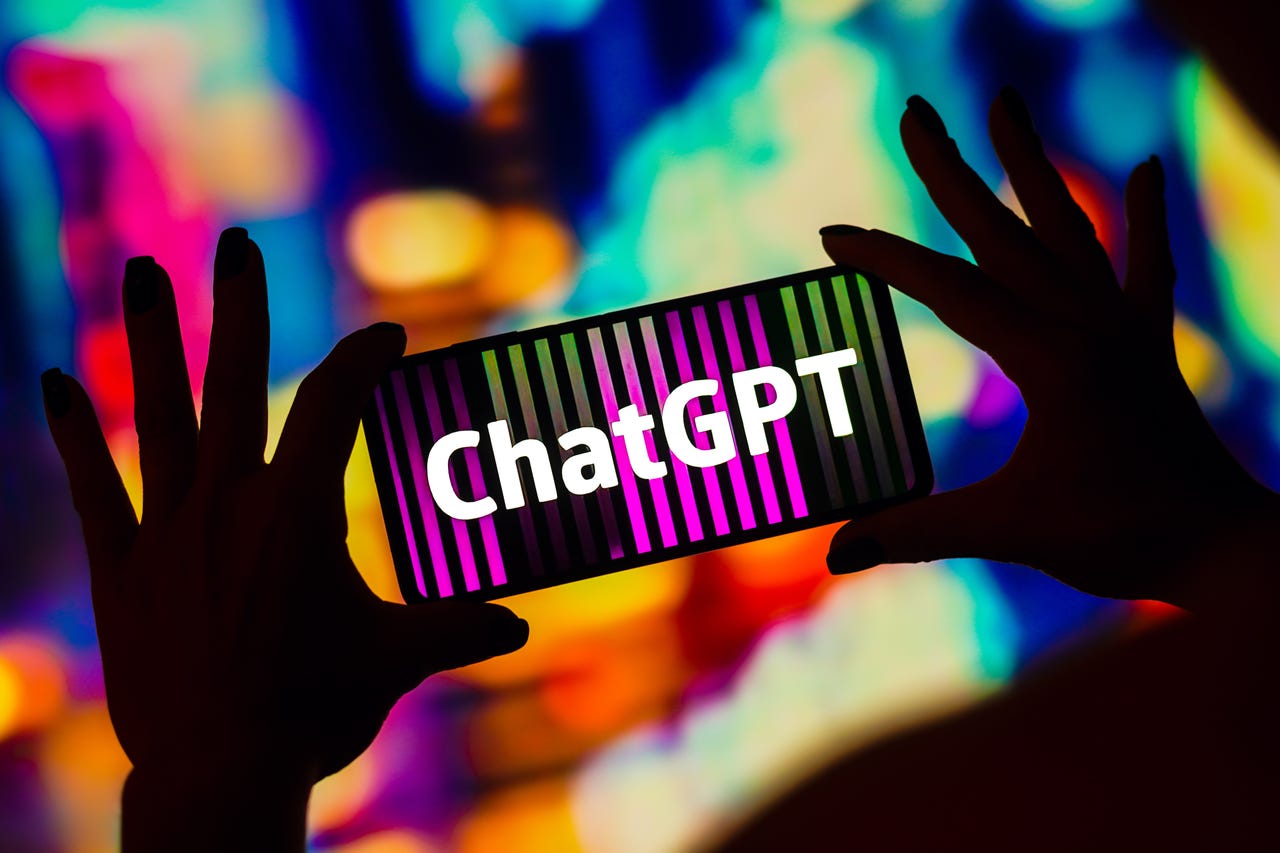2025 gonna be wild
— anushk (@anushkmittal) January 2, 2025
Grok is a Goldmine
— Poonam Soni (@CodeByPoonam) January 3, 2025
But it's only powerful if you use it for the right things.
11 ways to use Grok and save you hours of time: (🔖Bookmark for later) pic.twitter.com/akGXXmUCvS
Despite having worked on AI since I was a teenager, I’m now more excited than ever about what we can do with it, especially in building AI applications. Sparks are flying in our field, and 2025 will be a great year for building!
— Andrew Ng (@AndrewYNg) January 2, 2025
One aspect of AI that I’m particularly excited…
reflections: https://t.co/rHdE40AuOG
— Sam Altman (@sama) January 6, 2025
Is this the first time you’ve said this? I feel like this is the first definitive time pic.twitter.com/FGcPnvea4v
— Aaron Bailey (@aaroncbailey) January 6, 2025
We started OpenAI almost nine years ago because we believed that AGI was possible, and that it could be the most impactful technology in human history. ......... These years have been the most rewarding, fun, best, interesting, exhausting, stressful, and—particularly for the last two—unpleasant years of my life so far. ......... Getting fired in public with no warning kicked off a really crazy few hours, and a pretty crazy few days. The “fog of war” was the strangest part. None of us were able to get satisfactory answers about what had happened, or why. ........ I appreciate the way so many people worked together to build a stronger system of governance for OpenAI that enables us to pursue our mission of ensuring that AGI benefits all of humanity. ............ The last two years have been like a decade at a normal company. When any company grows and evolves so fast, interests naturally diverge. And when any company in an important industry is in the lead, lots of people attack it for all sorts of reasons, especially when they are trying to compete with it. .......... when we started we had no idea we would have to build a product company; we thought we were just going to do great research. ......... We also had no idea we would need such a crazy amount of capital. There are new things we have to go build now that we didn’t understand a few years ago, and there will be new things in the future we can barely imagine now. ............ We believe in the importance of being world leaders on safety and alignment research, and in guiding that research with feedback from real world applications. ........... We are now confident we know how to build AGI as we have traditionally understood it. We believe that, in 2025, we may see the first AI agents “join the workforce” and materially change the output of companies. We continue to believe that iteratively putting great tools in the hands of people leads to great, broadly-distributed outcomes. ............. We are beginning to turn our aim beyond that, to superintelligence in the true sense of the word. We love our current products, but we are here for the glorious future. With superintelligence, we can do anything else.
Superintelligent tools could massively accelerate scientific discovery and innovation well beyond what we are capable of doing on our own, and in turn massively increase abundance and prosperity.
....... Ron Conway and Brian Chesky went so far above and beyond the call of duty that I’m not even sure how to describe it. I’ve of course heard stories about Ron’s ability and tenaciousness for years and I’ve spent a lot of time with Brian over the past couple of years getting a huge amount of help and advice. .......... They used their vast networks for everything needed and were able to navigate many complex situations. .......... I thought I knew what it looked like to support a founder and a company, and in some small sense I did. But I have never before seen, or even heard of, anything like what these guys did, and now I get more fully why they have the legendary status they do. They are different and both fully deserve their genuinely unique reputations, but they are similar in their remarkable ability to move mountains and help, and in their unwavering commitment in times of need. ............ I look forward to paying it forward.Sam Altman Interview On Nov. 30, 2022, traffic to OpenAI’s website peaked at a number a little north of zero. It was a startup so small and sleepy that the owners didn’t bother tracking their web traffic. It was a quiet day, the last the company would ever know. Within two months, OpenAI was being pounded by more than 100 million visitors trying, and freaking out about, ChatGPT. .......... his relentless pursuit of artificial general intelligence—the still-theoretical next phase of AI, in which machines will be capable of performing any intellectual task a human can do. ........... Conservatively, I would say there were 20 founding dinners that year [2015], and then one ends up being entered into the canon, and everyone talks about that. The most important one to me personally was Ilya 1 and I at the Counter in Mountain View [California]. Just the two of us. ........... 2012 comes along. Ilya and others do AlexNet. 2 I keep watching the progress, and I’m like, “Man, deep learning seems real. Also, it seems like it scales. That’s a big, big deal. Someone should do something.” ............. It’s impossible to overstate how nonmainstream AGI was in 2014. People were afraid to talk to me, because I was saying I wanted to start an AGI effort. It was, like, cancelable. It could ruin your career. But a lot of people said there’s one person you really gotta talk to, and that was Ilya. So I stalked Ilya at a conference, got him in the hallway, and we talked. .............. The pitch was just come build AGI. ........ I cannot overstate how heretical it was at the time to say we’re gonna build AGI. So you filter out 99% of the world, and you only get the really talented, original thinkers. .......... if you’re building, like, the 10,000th photo-sharing app? Really hard to recruit talent. ........... Convince me no one else is doing it, and appeal to a small, really talented set? You can get them all. And they all wanna work together. So we had what at the time sounded like an audacious or maybe outlandish pitch, and it pushed away all of the senior experts in the field, and we got the ragtag, young, talented people who are good to start with. .............. People used to joke in those days that the only thing I would do was walk into a meeting and say, “Scale it up!” Which is not true, but that was kind of the thrust of that time period. ........... The rest of the company was like, “Why are you making us launch this? It’s a bad decision. It’s not ready.” I don't make a lot of “we’re gonna do this thing” decisions, but this was one of them. ............... And that started off a mad scramble to get a lot of compute 7—which we did not have at the time—because we had launched this with no business model or thoughts for a business model. I remember a meeting that December where I sort of said, “I’ll consider any idea for how we’re going to pay for this, but we can’t go on.” And there were some truly horrible ideas—and no good ones. So we just said, “Fine, we’re just gonna try a subscription, and we’ll figure it out later.” That just stuck. We launched with GPT-3.5, and we knew we had GPT-4 [coming] ............... It’s very unusual to have been a VC first and have had a pretty long VC career and then run a company. .............. And I knew I was both overwhelmed with gratitude and, like, “F---, I’m gonna get strapped to a rocket ship, and my life is gonna be totally different and not that fun.” I had a lot of gallows humor about it. My husband 8 tells funny stories from that period of how I would come home, and he’d be like, “This is so great!” And I was like, “This is just really bad. It’s bad for you, too. You just don’t realize it yet, but it’s really bad.” ................. It complicated my ability to live my life. But in the company, you can be a well-known CEO or not, people are just like, “Where’s my f---ing GPUs?” .............. come with me to the research meeting right after this, and you will see nothing but disrespect. Which is great. .............. that year was such an insane blur, from November of 2022 to November of 2023, I barely remember it. It literally felt like we built out an entire company from almost scratch in 12 months, and we did it in crazy public. One of my learnings, looking back, is everybody says they’re not going to screw up the relative ranking of important versus urgent, 9 and everybody gets tricked by urgent. So I would say the first moment when I was coldly staring at reality in the face—that this was not going to work—was about 12:05 p.m. on whatever that Friday afternoon was. ................ so they fired me at noon on a Friday. A bunch of other people quit Friday night. By late Friday night I was like, “We’re just going to go start a new AGI effort.” Later Friday night, some of the executive team was like, “Um, we think we might get this undone. Chill out, just wait.” .................. Saturday morning, two of the board members called and wanted to talk about me coming back. I was initially just supermad and said no. And then I was like, “OK, fine.” I really care about [OpenAI]. But I was like, “Only if the whole board quits.” I wish I had taken a different tack than that, but at the time it felt like a just thing to ask for. ............. There was this whole thing of, like, “Sam didn’t even tell the board that he was gonna launch ChatGPT.” ......... But what is true is I definitely was not like, “We’re gonna launch this thing that is gonna be a huge deal.” ............. It’s a crazy year, right? It’s a company that’s moving a million miles an hour in a lot of different ways. ............ But then very quickly it was over, and I had a complete mess on my hands. And it got worse every day. It was like another government investigation, another old board member leaking fake news to the press. And all those people that I feel like really f---ed me and f---ed the company were gone, and now I had to clean up their mess. .............. Once everything was cleared up, it was all fine, but in the first few days no one knew anything. And so I’d be walking down the hall, and [people] would avert their eyes. It was like I had a terminal cancer diagnosis. There was sympathy, empathy, but [no one] was sure what to say. ................ we do a three-hour executive team meeting on Mondays ............. yesterday and today, six one-on-ones with engineers. I’m going to the research meeting right after this. Tomorrow is a day where there’s a couple of big partnership meetings and a lot of compute meetings. .............. There’s five meetings on building up compute. I have three product brainstorm meetings tomorrow, and I’ve got a big dinner with a major hardware partner after. .......... A few things that are weekly rhythms, and then it’s mostly whatever comes up. ............ I’m not a big inspirational email writer, but lots of one-on-one, small-group meetings and then a lot of stuff over Slack. .............. I’m a big Slack user. You can get a lot of data in the muck. I mean, there’s nothing that’s as good as being in a meeting with a small research team for depth. But for breadth, man, you can get a lot that way. ............ You’ve put research in a different building from the rest of the company, a couple of miles away. .............. Research will still have its own area. Protecting the core of research is really critical to what we do. .............. Usually you get a very good product company and a very bad research lab. We’re very fortunate that the little product company we bolted on is the fastest-growing tech company maybe ever—certainly in a long time. But that could easily subsume the magic of research, and I do not intend to let that happen. .........................
when an AI system can do what very skilled humans in important jobs can do—I’d call that AGI.
.......... Can it start as a computer program and decide it wants to become a doctor? Can it do what the best people in the field can do or the 98th percentile? How autonomous is it? I don’t have deep, precise answers there yet, but if you could hire an AI as a remote employee to be a great software engineer, I think a lot of people would say, “OK, that’s AGI-ish.” .................... when I think about superintelligence, the key thing to me is, can this system rapidly increase the rate of scientific discovery that happens on planet Earth? ................. it was clear people were trying to use ChatGPT for search a lot, and that actually wasn’t something that we had in mind when we first launched it. ....................... since we’ve launched search in ChatGPT, I almost don’t use Google anymore. ........ Many people who work at OpenAI get really heartwarming emails when people are like, “I was sick for years, no doctor told me what I had. I finally put all my symptoms and test results into ChatGPT—it said I had this rare disease. I went to a doctor, and they gave me this thing, and I’m totally cured.” ............ Long term, as you think about a system that really just has incredible capability, there’s risks that are probably hard to precisely imagine and model. But I can simultaneously think that these risks are real and also believe that the only way to appropriately address them is to ship product and learn. .................. three potential roadblocks to progress: scaling the models, chip scarcity and energy scarcity .......... I think 2025 will be an incredible year. ............. He’s the president of the United States. I support any president. .......... The question was, will he abuse his political power of being co-president, or whatever he calls himself now, to mess with a business competitor? I don’t think he’ll do that. I genuinely don’t. May turn out to be proven wrong. ........... for all of the stories—people talk about how he berates people and blows up and whatever, I hadn’t experienced that. ............ The thing I really deeply agree with the president on is, it is wild how difficult it has become to build things in the United States. Power plants, data centers, any of that kind of stuff. I understand how bureaucratic cruft builds up, but it’s not helpful to the country in general. It’s particularly not helpful when you think about what needs to happen for the US to lead AI. And the US really needs to lead AI.This blog just reinforced my feeling that the next 5-10 years will feel like living through 100 years in terms of change, disruption, and human progress
— Mario Puzo (@38capital) January 6, 2025
Sam, as one of the first beta testers in Europe since ChatGPT’s launch in 2022, I’ve been amazed at how quickly it’s grown into something so impactful and efficient.
— Luciana Villanti (@lucianavillanti) January 6, 2025
Your commitment to aligning AGI with human values and your vision for its role in benefiting humanity are truly…
Idea: one way voice mode. Listens to audio/speech but replies with text only. Takes text prompts also while still listening. Seems this should be made for deaf/hearing accessibility situations at the least.
— David Mealo (@techSage) January 6, 2025
You carry that AGI around pic.twitter.com/rnk9TGodwz
— Jason Levin (@iamjasonlevin) January 6, 2025
Summary of "Reflections" by Sam Altman pic.twitter.com/DZWSQeqYQY
— MindBranches (@MindBranches) January 6, 2025
“We are now confident we know how to build AGI as we have traditionally understood it.” Because you already have
— $Q*🍓on Ethereum (@QStarETH) January 6, 2025
— Scales of Insights (@scales_insights) January 6, 2025
yes i really do; i hope we can start a lot more public debate very soon about how to approach this
— Sam Altman (@sama) January 6, 2025
Can you imagine this time last year ChatGPT couldn't reverse the word "strawberry" 🤯
— Michael Luo (@AzianMike) January 6, 2025
Excited to see what next year brings!
Feedback is welcome https://t.co/0pFnPaCgtG
— Elon Musk (@elonmusk) January 5, 2025
I used the ChatGPT image generator to draw a pie chart. It just could not do it. Multiple tries. Looks like ChatGPT is spatially/geometrically challenged. @openai @sama
— Paramendra Kumar Bhagat (@paramendra) January 6, 2025
I have not used Grok.
— Paramendra Kumar Bhagat (@paramendra) January 6, 2025
Grok will be the best source of truth by far https://t.co/PvtFaLwm9f
— Elon Musk (@elonmusk) January 5, 2025
Make men masculine again. It matters.
— Nichole Wischoff (@NWischoff) January 5, 2025
insane thing: we are currently losing money on openai pro subscriptions!
— Sam Altman (@sama) January 6, 2025
people use it much more than we expected.
Free Education And Health Care For All In Nepal By Way Of A Referendum https://t.co/sVpyhSy9ai
— Paramendra Kumar Bhagat (@paramendra) January 6, 2025
Boyan says this is 1-2% of global plastic emissions. If it were only 1% and they were able to keep growing at this rate, they'd capture all emissions in 8 years. https://t.co/NQf0gnxjAJ
— Paul Graham (@paulg) January 5, 2025
The numbers are in: In 2024, @TheOceanCleanup removed 11,740,000 kg of trash—a 78% year-over-year increase.
— Boyan Slat (@BoyanSlat) January 3, 2025
A big thank-you to everyone who helped make this happen!
Now, let’s double this in 2025! pic.twitter.com/UwYy5PUh9G
These are my favorite books I read this year. 📚 What are yours?
— Boyan Slat (@BoyanSlat) December 27, 2024
Not the End of the World by @_HannahRitchie
Essential reading for anyone who wants to understand the current state of the world’s environmental problems and how to solve them in a constructive way.
1491 by… pic.twitter.com/OdneMck5HK
Nothing demonstrates better that Zelensky has become a tremendous leader than his self-control in the face of such demeaning, morally vacuous lines of questioning. The rage and horror must be overwhelming. Superhuman. https://t.co/J6N4iFHh0q
— Garry Kasparov (@Kasparov63) January 6, 2025
All my most mentally ill friends ended up as mental health professionals
— Nikhil Krishnan (@nikillinit) January 5, 2025
When I was running Viaweb I was puzzled by this kind of graph, with alternating steep growth and flat spots. Then I realized it was just sin(x)-like variability added to a consistently growing function. This is what "ups and downs" look like in a world of overall growth. https://t.co/8VxNKKljoa
— Paul Graham (@paulg) January 5, 2025
Explain the Zen.
— Paramendra Kumar Bhagat (@paramendra) January 6, 2025
Great news: Seattle just raised its minimum wage to $20.76/hr, one of the highest in the nation! 🎉
— Pramila Jayapal (@PramilaJayapal) January 5, 2025
I’m proud to see my hometown leading the way in putting workers fast. Now let’s get it done nationwide.
In the 1990s, the top .01 percent paid about 30-35% of an effective tax rate. Today, they pay 20%. Republicans want to give more tax breaks to the ultra wealthy. Democrats want to raise taxes on these billionaires to pay for healthcare, jobs, and childcare. That's the difference.
— Ro Khanna (@RoKhanna) January 5, 2025
It is my earnest hope that His Majesty considers this matter in the interests of his subjects https://t.co/xUD8lOym8g
— Elon Musk (@elonmusk) January 4, 2025
The Reform Party needs a new leader. Farage doesn’t have what it takes.
— Elon Musk (@elonmusk) January 5, 2025
my prediction is that the alcohol-driven culture of nightlife is going to go though a huge upending
— Patricia Mou (@patriciamou_) January 5, 2025
Now is a good time to open that late night decaf tea house, evening bathhouse, game board parlor, or cozy cafe that closes at 2am pic.twitter.com/TFPi6BRTF9
The minimum wage is worth nearly 30 percent less than it was 15 years ago and hasn’t been raised since. That’s appalling.
— Rep. Ro Khanna (@RepRoKhanna) January 5, 2025
Congress needs to give Americans a family-supporting wage.










